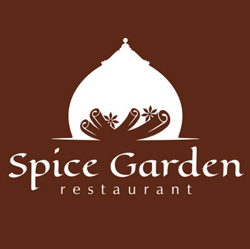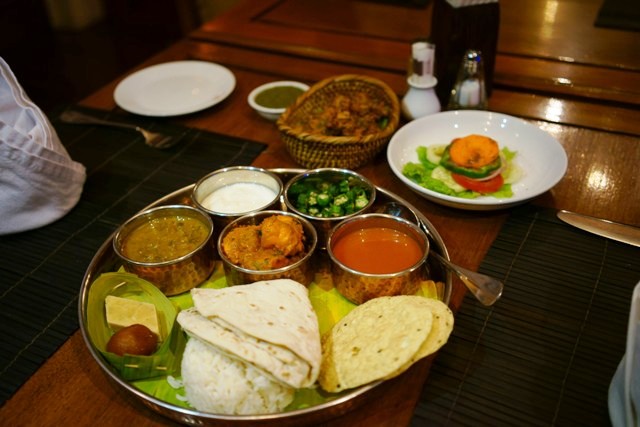India is a diverse nation with many different cultures. Although there are some eating habits that are considered staples of Indian cuisine, these habits may not be practiced by all the cultures of India. Cuisine differs across India’s diverse regions as a result of variation in local culture, geographical location (proximity to sea, desert, or mountains), and economics. It also varies seasonally, depending on which fruits and vegetables are ripe. Also, Middle Eastern and Central Asian influences have occurred on North Indian cuisine from the years of Mughal rule. Indian cuisine is still evolving, as a result of the nation’s cultural interactions with other societies.
Historical incidents such as foreign invasions, trade relations, and colonialism have played a role in introducing certain foods to the country. For instance, potato, a staple of the diet in some regions of India, was brought to India by the Portuguese, who also introduced chilies and breadfruit. Indian cuisine has shaped the history of international relations; the spice trade between India and Europe was the primary catalyst for Europe’s Age of Discovery. Spices were bought from India and traded around Europe and Asia. Indian cuisine has influenced other cuisines across the world, especially those from Europe, the Middle East, North Africa, sub-Saharan Africa, Southeast Asia, the British Isles, Fiji, and the Caribbean.
Indian food is rich in flavor. However, spices do more than flavor a dish; They are also used to cool and warm the body during hot or cold weather. Yogurt is commonly used to flavor dishes or as a sauce to chill spicy dishes. Many Indian dishes are cooked in vegetable oil, but peanut oil is popular in northern and western India, mustard oil in eastern India, and coconut oil along the western coast, especially in Kerala. Gingelly (sesame) oil is common in the south since it imparts a fragrant, nutty aroma. In recent decades, sunflower, safflower, cottonseed, and soybean oils have become popular across India. Butter-based ghee, or deshi ghee, is used frequently, though less than in the past.
Many types of meat are used for Indian cooking, but chicken and mutton tend to be the most commonly consumed meats. Fish and beef consumption are prevalent in some parts of India, but they are not widely consumed except for coastal areas, as well as the north east. Some leaves commonly used for flavouring include bay leaves (tejpat ), coriander leaves, fenugreek leaves, and mint leaves. The use of curry leaves and roots for flavouring is typical of Gujarati and South Indian cuisine. Sweet dishes are often seasoned with cardamom, saffron, nutmeg, and rose petal essences.

Eating habits of the Indian culture are based on culinary traditions. Most dishes feature meat or vegetables mixed with sauce and rice. Many Indians are vegetarian, so eating habits are often based on a diet that excludes all meat. When meat is incorporated in dishes, it is most commonly in the form of chicken, beef or lamb, and sometimes seafood, such as prawns. The majority of the Indian population is Hindu, so beef and pork are often excluded from Indian dishes due to religious requirements.
Cutlery is not traditionally used to eat food in the Indian culture. Food is meant to be a whole sensory experience, so an eating habit in the traditional Indian culture is to consume Indian foods such as curry, rice and naan bread by picking it up using the hands. Bread is often used to scoop up the curry sauce and rice, and it is dipped into traditional soups such as daal, a lentil-based soup. Indian people are supposed to eat with their right hands, because eating with the left hand is sometimes considered to be unclean.
Eating is usually with family and friends, with the homemaker on the table keeping an eye on the table, bringing and offering more food. In larger group meals or celebrations, a volunteer or attendant may not eat with the group, and dedicate himself or herself to bringing meal courses, feeding and serving the group. Asking for water, salt and helping oneself to items is accepted and cheered. Special requests such as less or more heat, yoghurt and other items is usually welcomed. Sometimes the group may eat silently, but asking questions to a loved one, catching up about one’s day and conversations are common.

More about the Indian traditional food are as follows:
Bengali Food
Bengali cuisine is appreciated for its fabulous use of panchphoron, a term used to refer to the five essential spices, namely mustard, fenugreek seed, cumin seed, aniseed, and black cumin seed. The specialty of Bengali food lies in the perfect blend of sweet and spicy flavors.
Gujarati Food
The traditional Gujarati food is primarily vegetarian and has a high nutritional value. The typical Gujarati thali consists of varied kinds of lip smacking dishes. Gujarati cuisine has so much to offer and each dish has an absolutely different cooking style.
Kashmiri Food
Kashmiri food that we have today in the restaurants has evolved over the years. Highly influenced by the traditional food of the Kashmiri pundits, it has now taken some of the features of the cooking style adopted in Central Asia, Persia and Afghanistan.
Mughlai Cuisine
Mughlai cuisine is one of the most popular cuisines, whose origin can be traced back to the times of Mughal Empire. Mughlai cuisine consists of the dishes that were prepared in the kitchens of the royal Mughal Emperors. Indian cuisine is predominantly influenced by the cooking style practiced during the Mughal era.
Punjabi Food
The cuisine of Punjab has an enormous variety of mouth-watering vegetarian as well as non vegetarian dishes. The spice content ranges from minimal to pleasant to high. Punjabi food is usually relished by people of all communities. In Punjab, home cooking differs from the restaurant cooking style.
Rajasthani Food
The cuisine of Rajasthan is primarily vegetarian and offers a fabulous variety of mouthwatering dishes. The spice content is quite high in comparison to other Indian cuisines, but the food is absolutely scrumptious. Rajasthanis use ghee for cooking most of the dishes. Rajasthani food is well known for its spicy curries and delicious sweets.
South Indian Cuisine
The cuisine of South India is known for its light, low calorie appetizing dishes. The traditional food of South India is mainly rice based. The cuisine is famous for its wonderful mixing of rice and lentils to prepare yummy lip smacking dosas, vadas, idlis and uttapams.








